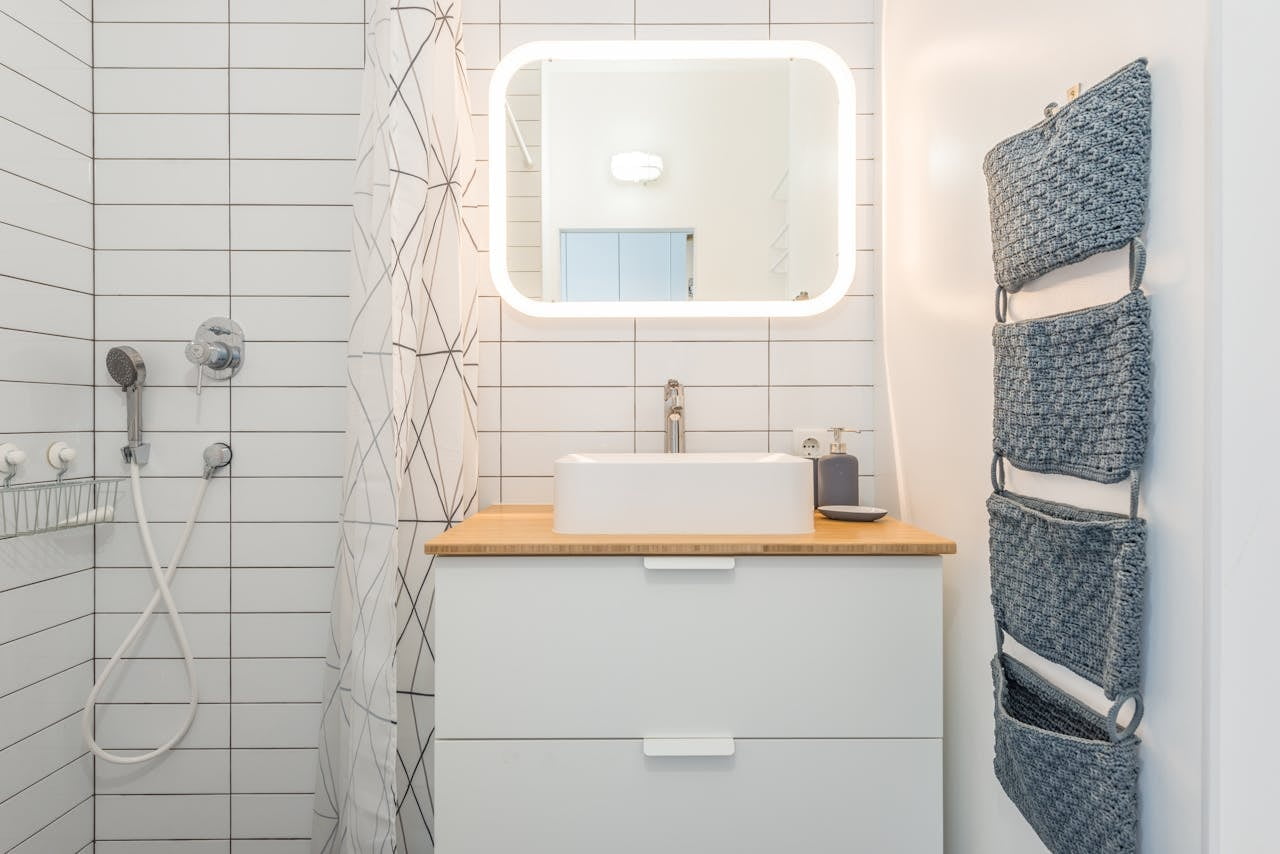
Refreshing your bathroom doesn’t have to involve a complete renovation. Sometimes, something as simple as upgrading your shower curtain and curtain rod can create a significant impact.
With so many types of shower curtains and shower curtain rod types available today, choosing the right one may feel overwhelming. However, understanding the differences between them can help you select options that perfectly balance functionality, style, and ease of maintenance.
Types of Shower Curtains
Types of Shower Curtains
Shower curtains come in a variety of materials, designs, and styles, each with its unique advantages. From eco-friendly fabrics to mold-resistant options, here are the most popular types of shower curtains to consider for your bathroom.
1. Vinyl Shower Curtains
1. Vinyl Shower Curtains
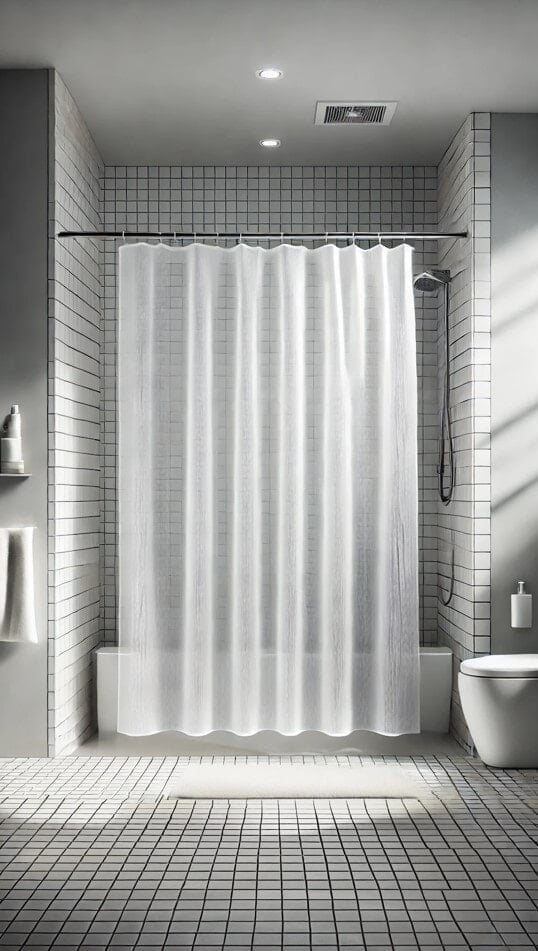
Vinyl shower curtains, made from polyvinyl chloride (PVC), are one of the most common options on the market. They are widely appreciated for their low cost, durability, and water-resistance, making them a practical choice for busy households.
Advantages:
- Easy to clean: Simply wipe them down with a damp cloth or toss them in the washing machine.
- Affordable and widely available.
Disadvantages:
- Non-breathable material can trap moisture, potentially leading to increased mold and mildew growth.
- May release volatile organic compounds (VOCs) and phthalates, which can cause respiratory or skin irritation.
2. Fabric Shower Curtains
2. Fabric Shower Curtains
Fabric shower curtains are a more elegant and environmentally friendly alternative to vinyl. They come in a wide range of materials, including cotton, linen, hemp, and bamboo, offering natural textures and a stylish appearance.
Cotton Shower Curtains
Cotton Shower Curtains
Cotton shower curtains are a classic and popular choice. They are soft, absorbent, and easy to clean. However, they can be prone to mold and mildew growth if not properly cared for.
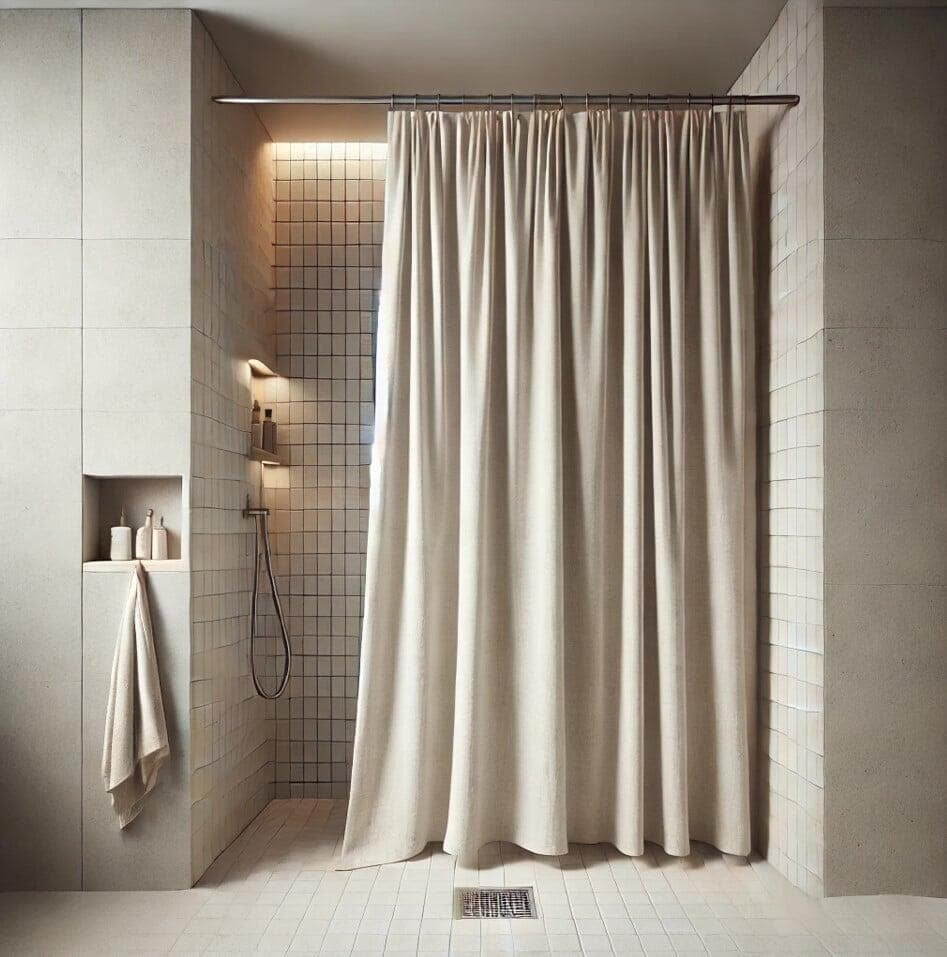
Linen Shower Curtains
Linen Shower Curtains
Linen shower curtains are known for their durability, natural resistance to mold and mildew, and luxurious look. They do require more maintenance than other materials as they need to be ironed after washing to maintain their crisp appearance.
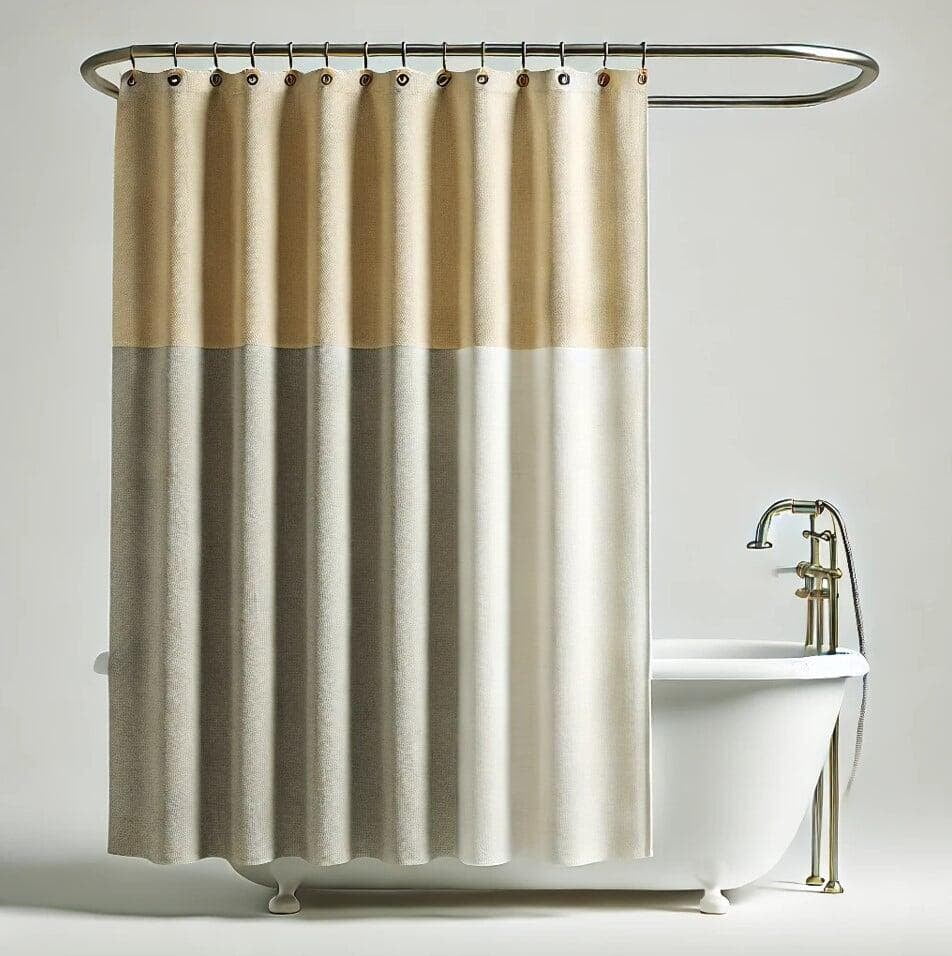
Polyester Shower Curtains
Polyester Shower Curtains
Polyester shower curtains are a popular choice due to their water resistance, affordability, and wide availability. While they are not fully waterproof, they repel water effectively and pair well with a liner for added protection.
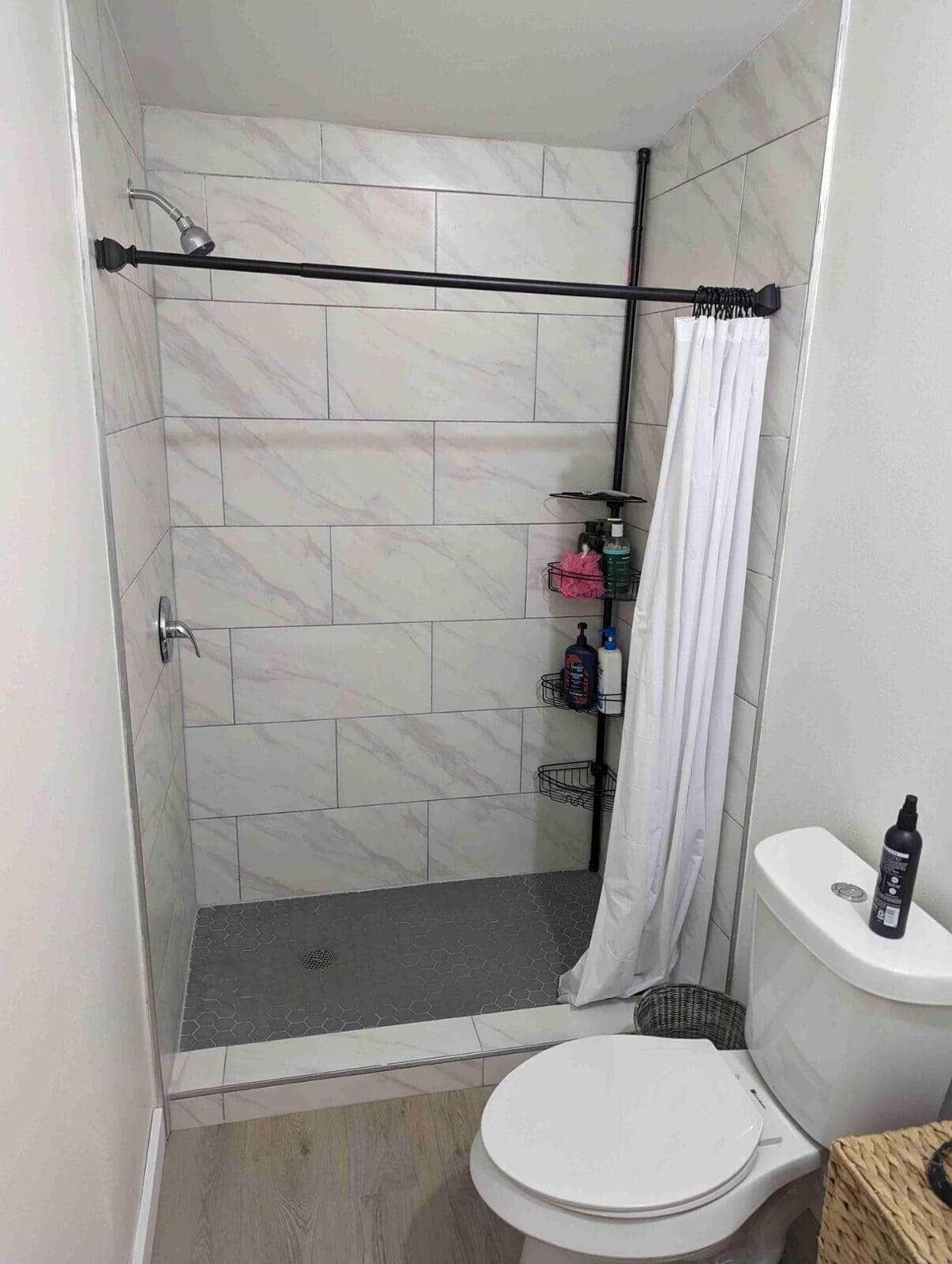
Microfiber Shower Curtains
Microfiber Shower Curtains
Microfiber curtains, made from a blend of polyester and nylon fibers, are soft, water-resistant, and hypoallergenic. They’re easy to clean, making them a great option for households with children or individuals with allergies.
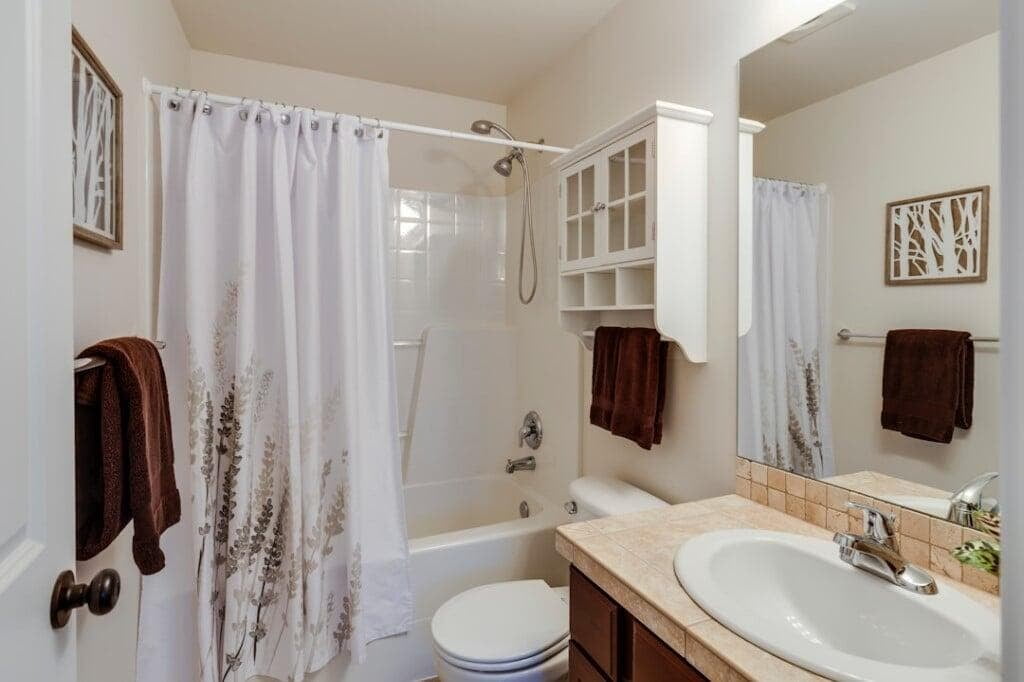
3. Weighted Hem Shower Curtains
3. Weighted Hem Shower Curtains
Weighted hem shower curtains are designed with a weighted bottom edge to prevent them from clinging to your body during showers. This feature is particularly useful if you have a high-powered showerhead that generates a lot of spray.
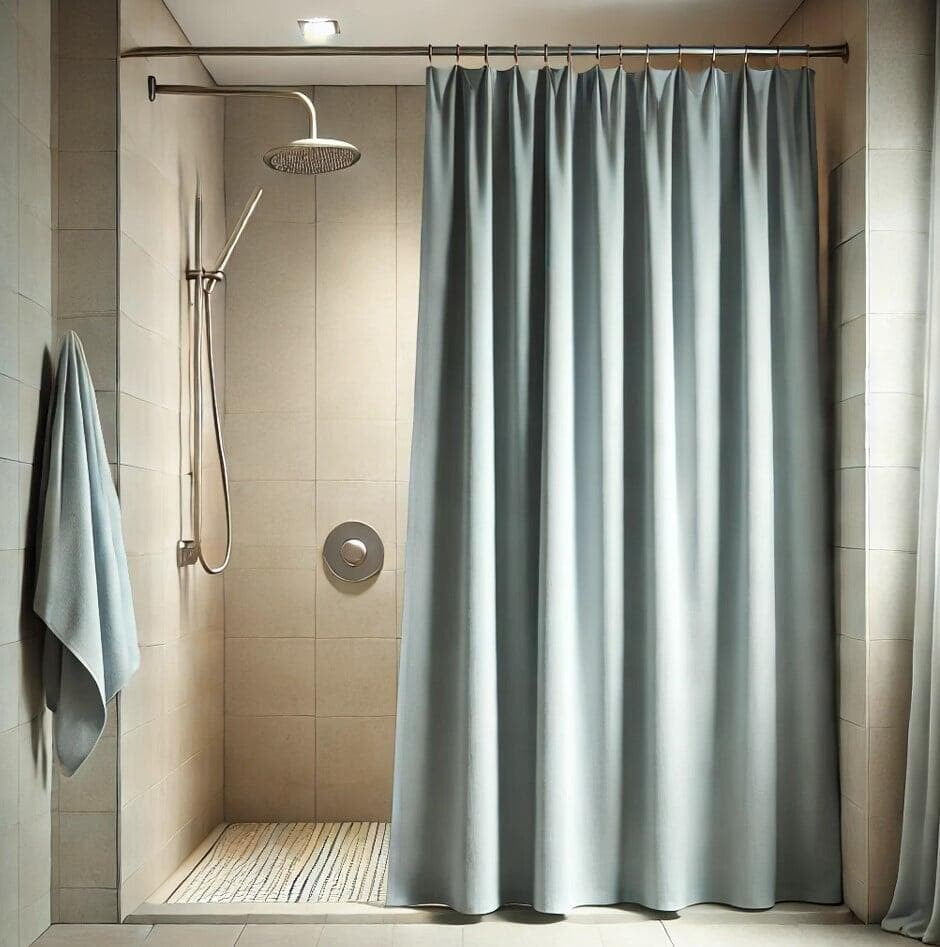
4. Mold and Mildew Resistant Shower Curtains
4. Mold and Mildew Resistant Shower Curtains
One of the main concerns with shower curtains is the buildup of mold and mildew, which can be harmful to your health. To combat this, many manufacturers now offer mold and mildew resistant shower curtains. These curtains are typically made from materials that are quick-drying and have antimicrobial properties.
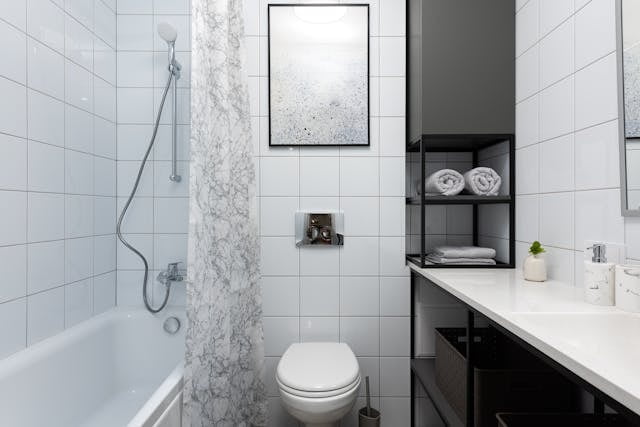
5. Extra-long or Extra-Wide Shower Curtains
5. Extra-long or Extra-Wide Shower Curtains
Standard shower curtains are usually 72 inches long and fit most standard bathtubs. However, if you have a larger or elongated tub, you may need an extra-long shower curtain to fully cover the space. Similarly, if you have a wider shower stall, an extra-wide shower curtain can provide better coverage and prevent water from splashing out.
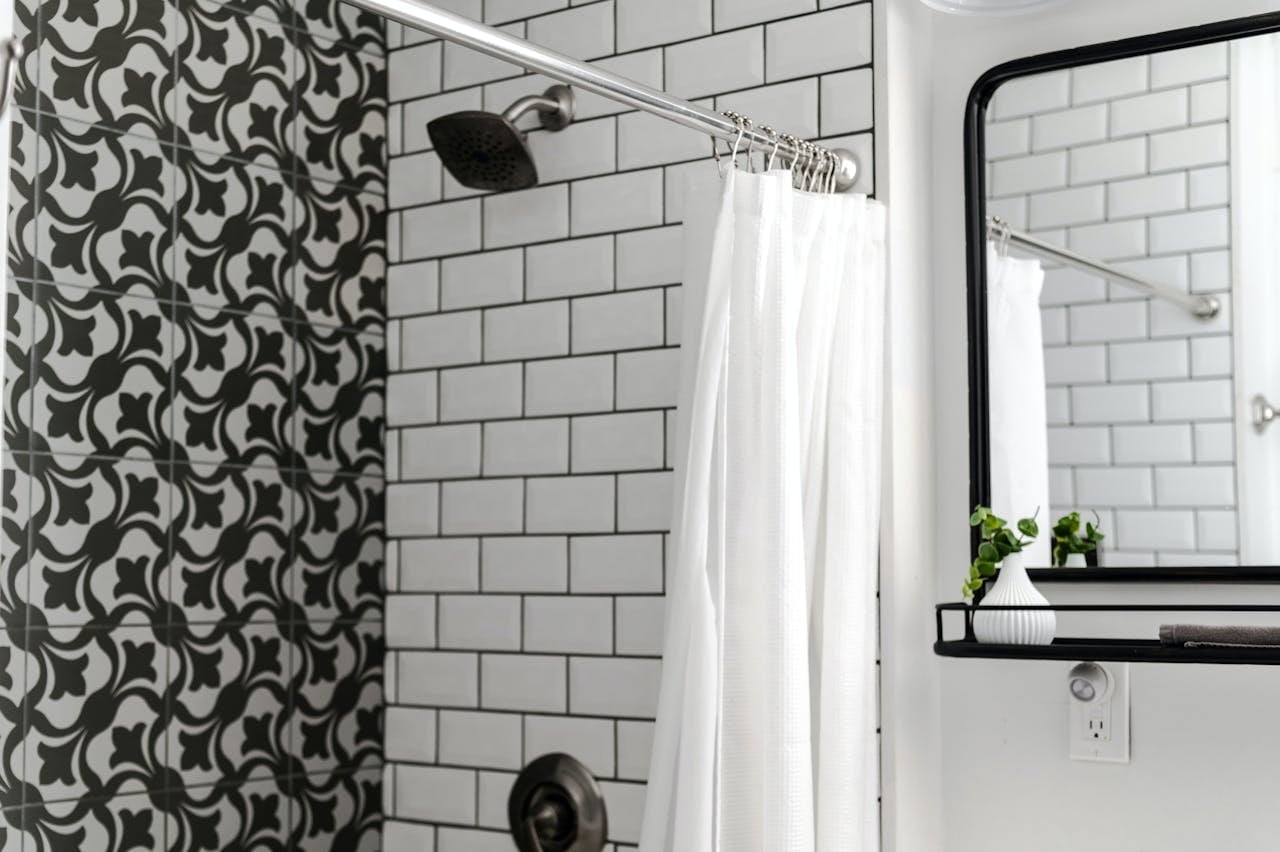
6. PEVA/EVA Shower Curtains
6. PEVA/EVA Shower Curtains
PEVA/EVA shower curtains are becoming a more popular choice for those looking to actively reduce the harmful chemicals present in their bathrooms. When compared to vinyl and PVC material choices, PEVA and EVA shower curtains are a healthier option for users and also more eco-friendly to the wider environment.
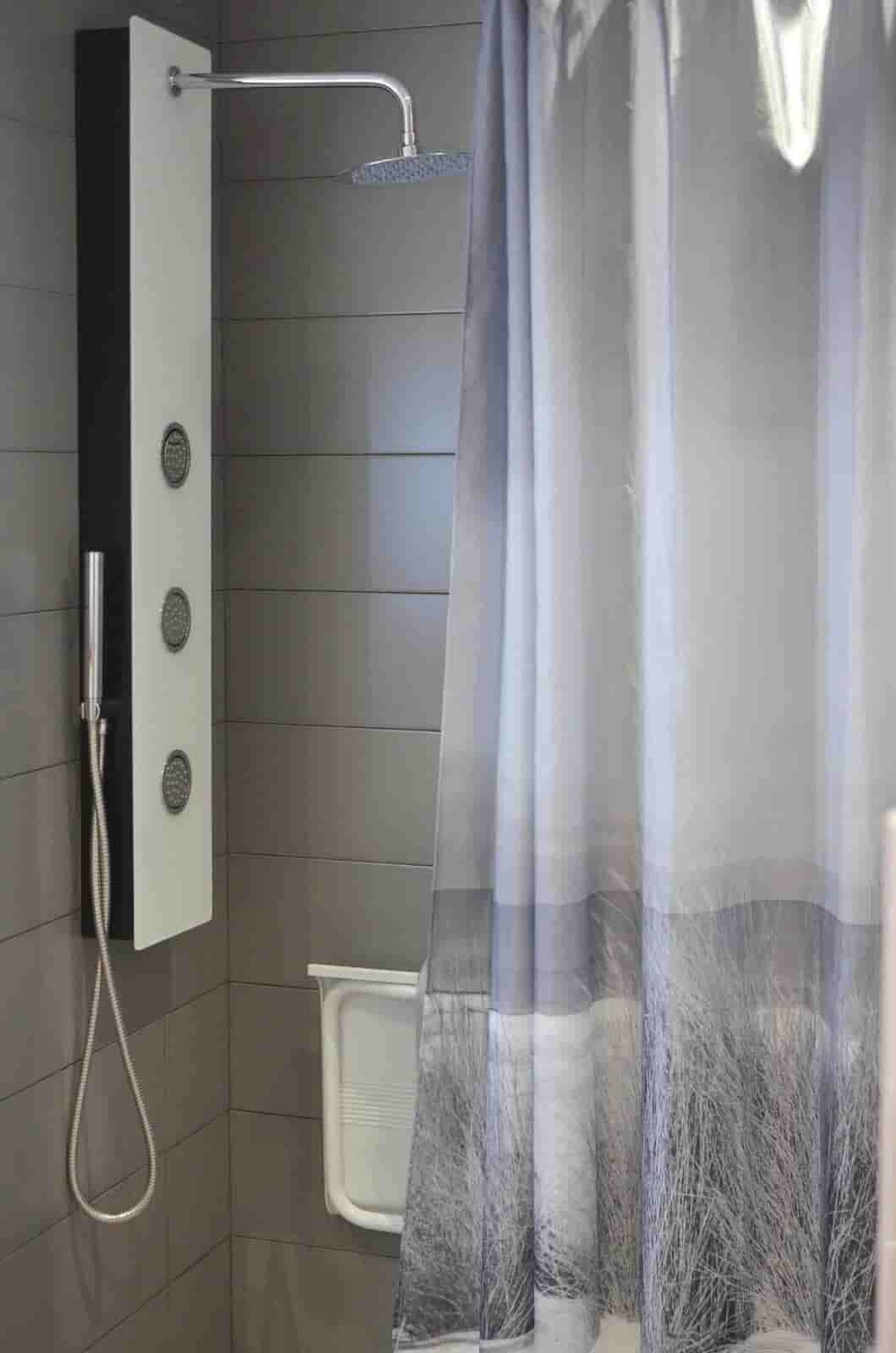
7. Hookless Shower Curtains
7. Hookless Shower Curtains
Another convenient feature of modern shower curtains is the hookless option. Instead of traditional metal or plastic hooks, these curtains have built-in grommets that allow them to easily slide onto your curtain rod without the need for additional hardware.
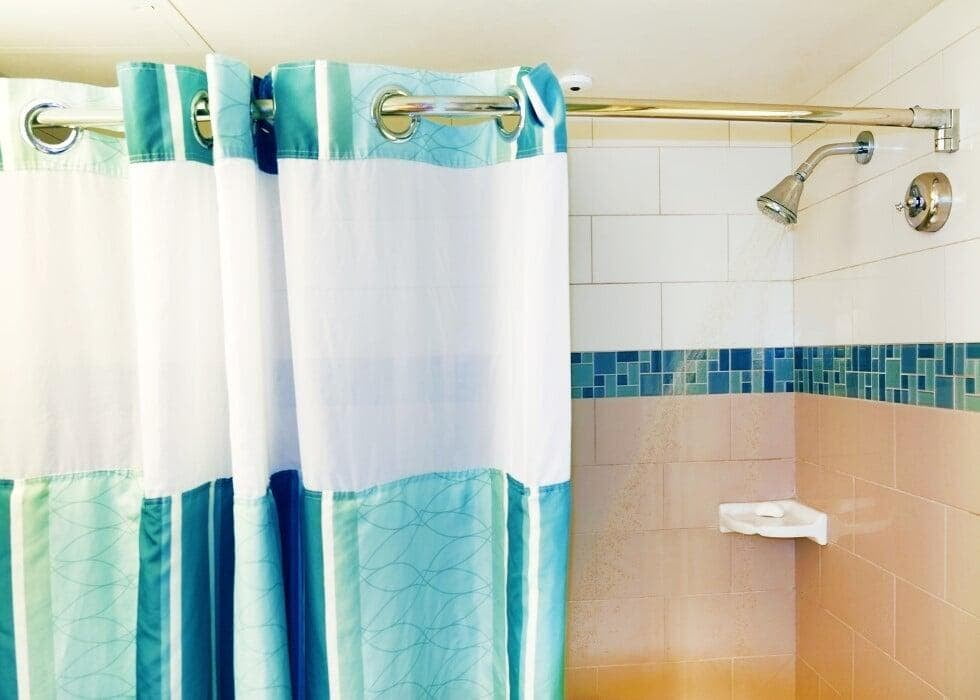
Shower Curtain Size Chart
Shower Curtain Size Chart
Here’s a comprehensive table outlining the common shower curtain standard dimensions to help you select the perfect size for your bathroom setup
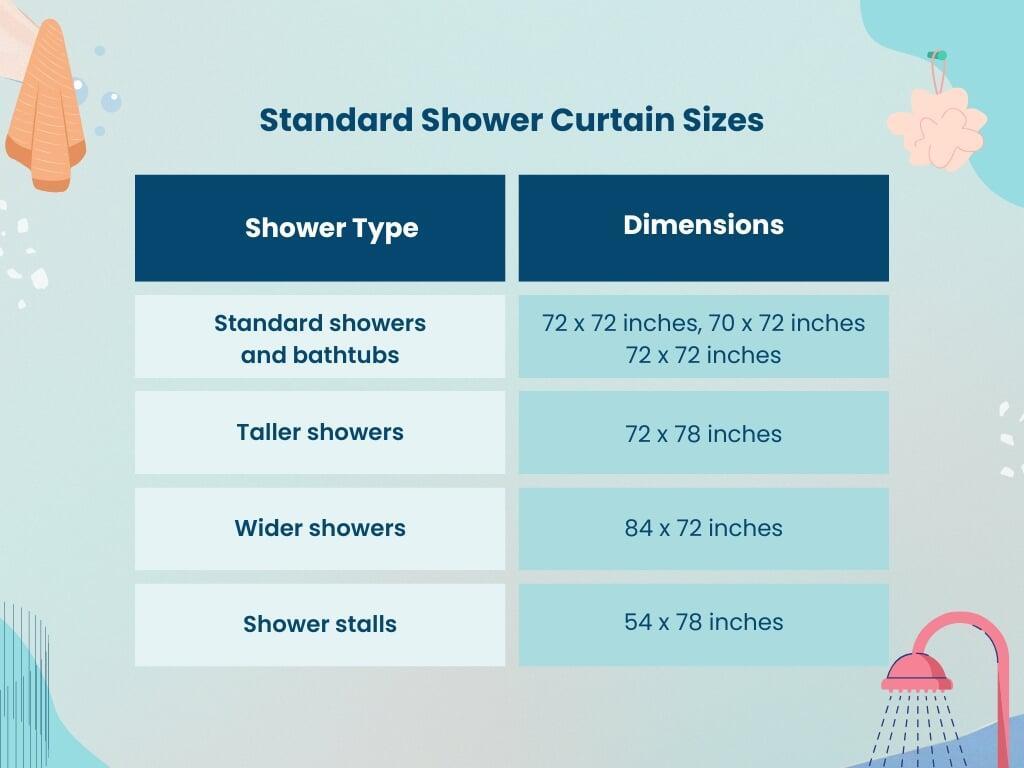
Types of Shower Curtain Rod
Types of Shower Curtain Rod
1. Straight Shower Rod
1. Straight Shower Rod
The most common type of shower rod, a straight rod is designed to attach on both ends of the shower stall or bathtub.
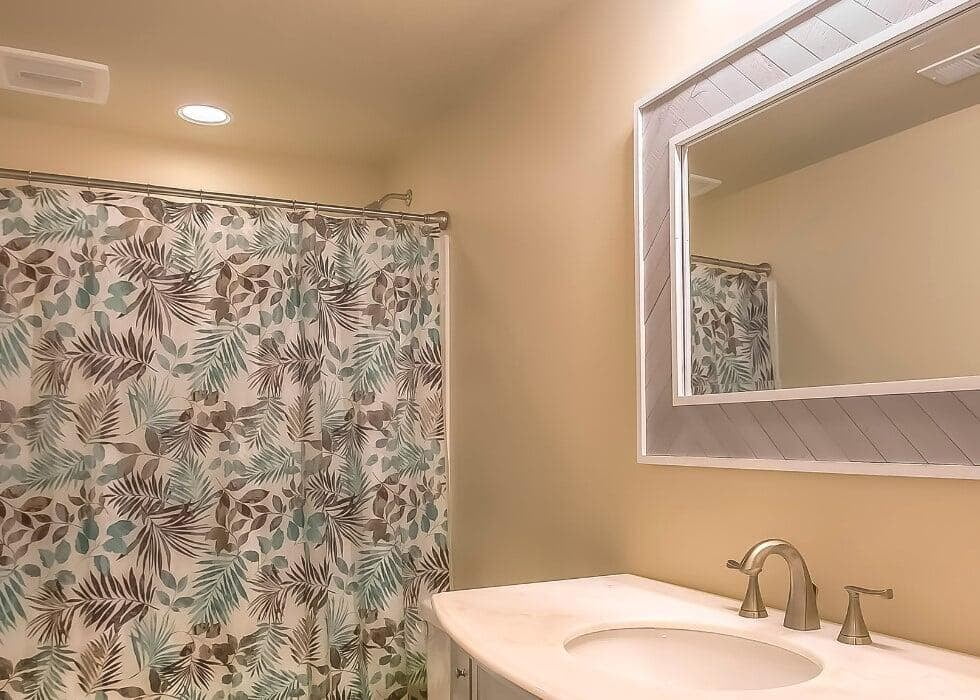
2. Curved Shower Curtain Rod
2. Curved Shower Curtain Rod
A curved shower curtain rod is ideal for creating extra elbow room in smaller bathrooms. By curving outward, it prevents the curtain from clinging to your body, offering a more spacious feel inside the shower. Curved rods not only add a stylish touch but also enhance the overall aesthetic of your bathroom decor.
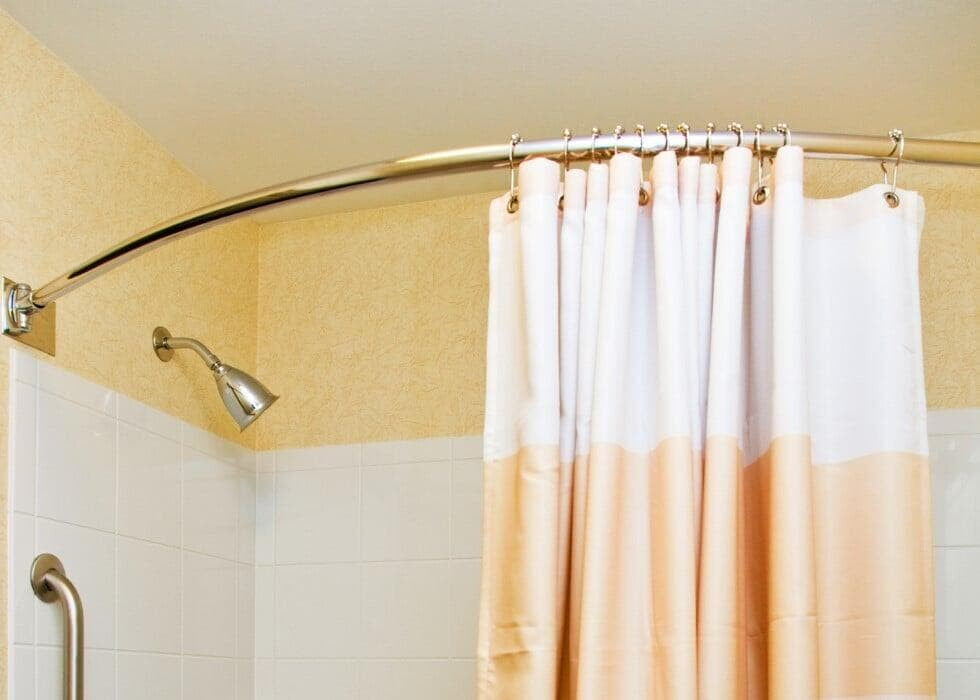
3. Double Shower Curtain Rod
3. Double Shower Curtain Rod
A double shower rod is perfect for those who like to have both a shower curtain and liner. It allows you to easily switch out the liner when needed without having to remove the entire curtain.
4. Tension Shower Curtain Rod
4. Tension Shower Curtain Rod
Tension rods are a versatile, damage-free solution for renters or those who want to avoid drilling into their walls. These adjustable rods rely on pressure to stay in place and are suitable for various bathroom setups.
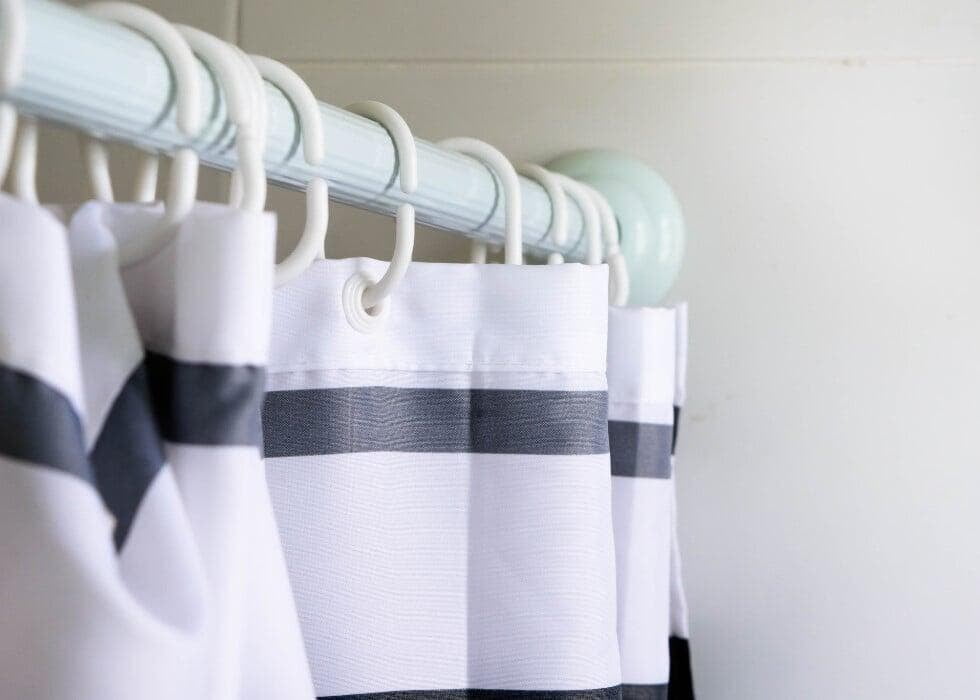
5. Ceiling-Mounted Shower Curtain Rod
5. Ceiling-Mounted Shower Curtain Rod
For a more dramatic look, a ceiling-mounted rod can be used. This type of rod is attached to the ceiling and creates a more open and spacious feel in the shower.
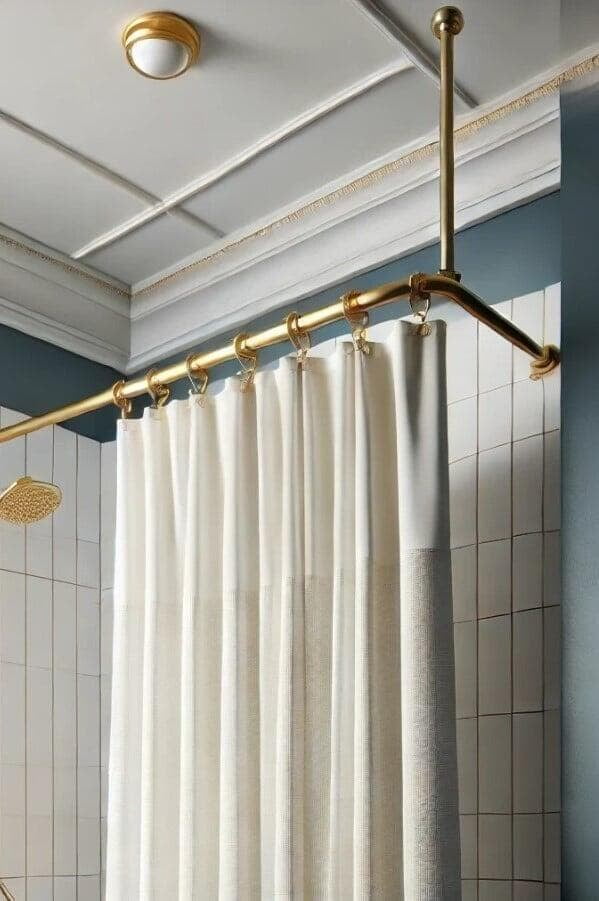
FAQs
FAQs
How long should shower curtains be?
How long should shower curtains be?
The standard length for most shower curtains is 72 inches, while longer tubs and showers typically require a length of 84 inches.
Should shower curtains touch the floor?
Should shower curtains touch the floor?
Shower curtains should not touch the floor. Ideally, they should hang about 2 inches (5 cm) above the floor.This gap prevents the curtain from collecting dirt, moisture, and bacteria, making it easier to maintain cleanliness and avoid mold or mildew buildup.
What is the smallest shower curtain size?
What is the smallest shower curtain size?
The smallest standard shower curtain size is typically 36 inches wide by 72 inches tall. This size is designed for narrow or stall showers.
Should the shower curtain and liner be the same size?
Should the shower curtain and liner be the same size?
Yes, the shower curtain and liner should generally be the same size to ensure proper coverage and functionality. Both should match the width and height of your shower space to prevent water from splashing out.
Do shower curtains go inside or outside?
Do shower curtains go inside or outside?
The shower curtain liner should go inside the bathtub or shower to keep water contained and prevent it from spilling onto the bathroom floor. The shower curtain itself can hang outside the tub or shower for decorative purposes and to keep it dry.
Which is Better: Straight or Curved Shower Rods?
Which is Better: Straight or Curved Shower Rods?
Curved shower rods are better if you want extra shower space and a more luxurious feel. However, straight rods are ideal for smaller bathrooms with limited space.
Is It Better to Have a Double or Single Shower Curtain Rod?
Is It Better to Have a Double or Single Shower Curtain Rod?
A double rod is more versatile, offering separate spaces for a decorative curtain and a functional liner. A single rod is more compact and suitable for minimalist designs.
Are There Alternatives to Shower Curtains?
Are There Alternatives to Shower Curtains?
Yes, alternatives like glass shower doors or fixed glass panels are popular for their modern look and easy maintenance. Not sure which is best? Read our guide on choosing between shower curtains and doors.
By carefully selecting the right types of shower curtains and shower curtain rod types, you can transform your bathroom into a stylish and functional space that suits your needs. Whether you prefer eco-friendly fabric curtains, sleek hookless designs, or a curved rod for added space, the options are endless.
If you're located in Corpus Christi or anywhere in South Texas and need assistance with selecting the perfect shower curtain, rod types, or even professional installation, we're here to help! Contact us today to transform your bathroom with ease.

